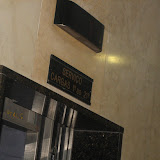 |
| Brazilian Kids in Rio |
PROUD TO BE AN AMERICAN?
Within moments of choosing a spot on the beach, and before we sat down, a tiny twelve year old in a tinier bikini ran up to the group of us and asked me: “E Famosa? Uganda? Uganda?” “Não,” I responded, still a little shy on the Portuguese. No, I’m not famous, and I’m not from Uganda. When asked to guess where I was from, Antonia responded Americana! She was equally certain that Priscilla (a Blackwoman) and Adrianette (a biracial Black & Italian woman) were American. As for Melissa (a Chicana) and Alex (a Romani woman), they were declared Gringa.
We laughed a lot at that exchange, and over the course of the afternoon, but there was something ironic in it. That was my first time being identified as Americana – not an Afro/Negro/Preto/Pardo American – but A M E R I C A N. Similarly, I suspect that Melissa and Alex had never been white before. In those few moments they wondered what it might feel like to have white privilege; and I wondered what it mean, and more importantly what it might take to really be Americana.
DID YOU KNOW?
The end of chattel slavery in Brazil was not followed by an apartheid era as was the case in the United States. Although there were no Black Codes; no legally sanctioned segregation, myriad socially accepted, expected and enforced rules supported the racial hierarchy. Although never codified, these social conventions continue to result in everyday indignities for Afro-Brazilians not dissimilar to those in the Jim Crow South. For example, buildings in Brazil that have elevators have two; a social elevator and a service elevator. The purpose this custom was to preserve, by segregation, the social hierarchy between society and its servants. Even today, servants are expected to use the service elevator, and of course, servants are almost always Black. As a result, Blacks, whether they are servants or not, often suffer social reprisal in some cases, violent reprisal for stepping out of their presumed places by using the social elevator.
COALITION BUILDING AT ADAMI & ASSOCIATES
I saw my first set of “service” and “social” elevators (pictured above) on the way up to visit Humberto Adami of Adami Associates. The service elevator arrived first, and its passenger disembarked. Priscilla, George, Melissa and I looked at one another, and made an unspoken but unanimous decision not to ride the service elevator to the to the office that houses Mr. Adami’s civil rights practice. Mr. Adami briefed us on his antidiscrimination efforts: To use public information and statistics, available in newspapers, and even on company websites to trigger action, by the relevant public ministries.
One of the goals of the Praxis Project was to Thus, for me, the highlight of the meeting was connecting with Mr. Adami’s two interns, Aline, and Luciene, both of whom are student activists. I caught a few moments of exchange between Aline and Priscilla on the subject of Affirmative Action. I’m still a novice with the multi-media and we have the Flinstone's old internet connection, but I'll get the footage up soon! We are trying to organize a conversation with a number of students from UERJ and PUC Rio for the end of the week. Stay tuned!




No comments:
Post a Comment